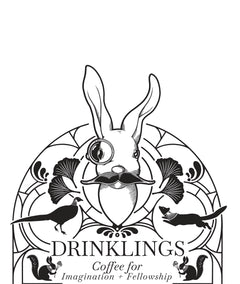J.R.R. Tolkien On Fairy Stories (Part 1)
J.R.R. Tolkien is almost always evasive.
I have a feeling that's not a sentiment he would enjoy. Like many of those that partook in the tradition of late 19th and early 20th-century British literature, Tolkien desired clarity: not clarity in the sense of merely being understood at a subjective level but clarity in the sense of setting things that are wrong into the right direction. And like many of his fellow Inklings', Tolkien believed that story was the most appropriate way of conveying the true essence of things. You can tell someone all day long one thing or another and attempt to convert their cognition, or you can show them through the mode of narrative and convert their imagination.
This is what makes it strange to think of Tolkien, the author The Hobbit, The Lord of the Rings, The Silmarillion, and The Children of Hurin as a "fairy tale" author. Myth, yes. Epic, absolutely. Even a children's writer, as far as The Hobbit is concerned, makes sense as it concerns the philologist. But the author of fairy tales? Like, Peter Rabbit? Or The Three Little Pigs? According to his essay On Fairy-Stories, first given at The University of St. Andrews in 1939, the answer may very well be, 'yes!'
In short, Tolkien tries to set the record straight for what constitutes a legitimate fairy tale. This both broadens and narrows the concept to such a degree that, in his estimation, the idea that fairy stories are a form of "children's literature" is merely an "accident of our domestic history." In his view, these stories are meant equally for adults and children and it is a lamentable fact of history that we have decided culturally that one "outgrows" fairy stories. For Tolkien, fairy stories are actually the quintessential art form given to man.
That the images are of things not in the primary world (if indeed that is possible) is a virtue not a vice. Fantasy (in this sense) is, I think, not a lower but a higher form of Art, indeed the most nearly pure form, and so (when achieved) the most potent.
Tolkien goes about demonstrating this with three questions: 1) What are Fairy Stories? 2) What is their Origin?; 3) What is the use of them?
Over the next three blogs we'll begin to explore these questions in a reflection of Tolkien's thoughts starting with the question "what is a fairy story?"
I will say, as a matter of personal conversion, that this essay provided a solid 180 degrees for me (Randy) on how I have looked at Fairy Stories. We hope that even a little coffee shop inspired by the legacy of those like Tolkien and his fellow Inklings can offer something substantial in reflection as to why these stories are important.




